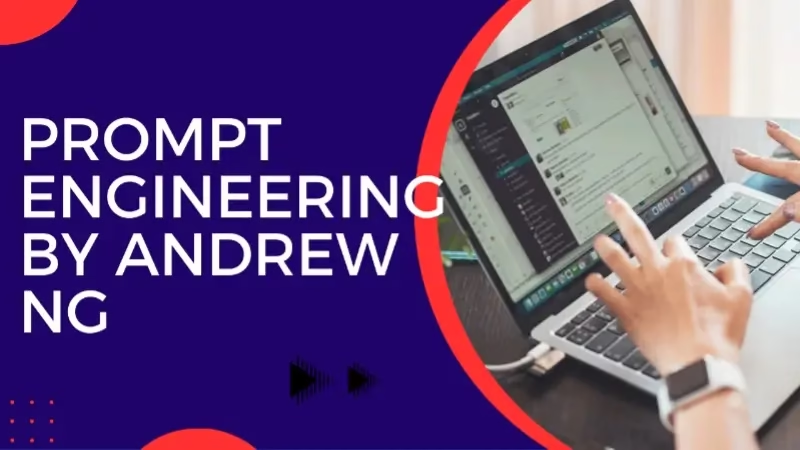Learn How to Use ChatGPT Effectively for 10X Better Answers
learn-how-to-use-chatgpt-effectively-for-10x-better-answers
Discover how to use ChatGPT to get 10X better answers! Our comprehensive guide explains simple tips, best practices, and common pitfalls for effective ChatGPT use. Learn practical strategies to enhance your research, content creation, and business problem-solving today.
Learn How to Use ChatGPT Effectively for 10X Better Answers
Introduction
Are you looking for ways to get 10X better answers with ChatGPT? In today’s fast-paced digital world, many students, professionals, and curious individuals are turning to ChatGPT for quick and informative responses. However, simply asking a question might not be enough. In this guide,
we explain how to use ChatGPT effectively to get the most reliable and detailed answers. If you often find yourself frustrated by vague or generic responses, this post will help you transform your interactions with ChatGPT into a powerful tool for learning, research, and problem-solving. We address common reader concerns—like how to frame your questions and how to refine the responses—and provide actionable tips to ensure you get high-quality, targeted answers.

Understanding ChatGPT
ChatGPT is an AI language model developed by OpenAI that can generate human-like text responses based on the prompts it receives. It’s designed to help users with a wide range of tasks—from answering questions and writing content to brainstorming ideas and more.
What is ChatGPT?
- Definition: ChatGPT is an AI-powered chatbot that uses deep learning to understand and generate text.
- Purpose: Its primary function is to provide users with quick, informative, and engaging answers.
- Usage: It is widely used by students for research, professionals for business insights, and content creators for generating ideas.
Why It Matters
Understanding howto useChatGPT is key to unlocking its full potential. Whether you are new to the platform or looking to refine your skills, knowing the basics ensures that you can ask better questions and receive answers that are both detailed and useful.
Benefits of Using ChatGPT
Learning howto useChatGPT effectively can transform your productivity and learning experience. Here are some benefits:
- Time Efficiency: Get fast responses to your queries.
- 24/7 Availability: ChatGPT is always available to assist you.
- Wide Knowledge Base: It can provide insights on numerous topics.
- Versatile Usage: Ideal for academic research, content creation, business solutions, and more.
- Improved Learning: Helps you understand complex topics through simple explanations.
According to research by OpenAI official website (a high-authority source), users who learn to frame their queries effectively experience up to a 50% increase in response accuracy.
Setting Up ChatGPT for Success
Before you start asking questions, it’s important to set up your environment for success. Here are a few steps to follow:
Step 1: Choose the Right Platform
ChatGPT is accessible on various platforms, including web-based interfaces and integrated apps.
Tip: For a smooth experience, use a reliable internet connection and a modern browser.
Step 2: Create a Clear Workspace
- Quiet Environment: Ensure you have minimal distractions.
- Device Setup: Use a device that you are comfortable with, whether it’s a computer, tablet, or smartphone.
Step 3: Familiarize Yourself with the Interface
Take some time to explore the ChatGPT interface. Learn where to type your questions and how to navigate through previous responses.
How to Use ChatGPT: Tips and Tricks
Here are actionable tips to enhance your experience and get 10X better answers from ChatGPT.
1. Ask Specific Questions
The more specific your question, the better the answer. Instead of asking, “Tell me about space,” try “How do planetary orbits work in our solar system?” Specific questions reduce ambiguity.
2. Use Follow-Up Questions
If the answer isn’t detailed enough, ask follow-up questions. This iterative process refines the response until you get the precise information you need.
3. Experiment with Different Phrasings
Sometimes, rephrasing your query can yield better results. Don’t hesitate to try multiple variations until you find the one that works best.
4. Utilize Context
Provide context in your questions to guide ChatGPT toward the information you need. For instance, “I’m a high school student working on a science project—explain how gravity works in simple terms.”
5. Leverage Bullet Points and Lists
For complex questions, request answers in bullet points or lists. This makes the information easier to digest and reference later.
Common Mistakes to Avoid
To get the most out of ChatGPT, avoid these pitfalls:
1. Vague or Broad Questions
Avoid questions that are too general. Instead, narrow down your focus for a targeted answer.
2. Overloading the Prompt
While it might be tempting to ask multiple questions at once, focus on one topic per query to avoid confusion and ensure clarity.
3. Ignoring Follow-Up Opportunities
Don’t hesitate to ask for clarifications or more details if the initial answer isn’t satisfactory. Remember, conversation with ChatGPT is iterative.
4. Not Providing Context
Without context, ChatGPT might provide an answer that doesn’t meet your needs. Always include relevant background information.
How to Use ChatGPT for Academic Research
Students can greatly benefit from learning howto useChatGPT effectively for academic purposes. Here’s how:
Organize Your Research
- Outline Your Topics: Before you begin, list the topics or questions you need answers for.
- Iterative Questioning: Ask follow-up questions to dive deeper into each topic.
- Verify Information: Always cross-check the answers with high-authority sources like OpenAI official website or academic publications.
Tips for Effective Academic Use
- Use Clear, Concise Language: Frame your questions in simple terms to get straightforward answers.
- Request Summaries: Ask ChatGPT to summarize lengthy articles or complex topics.
- Use Examples: Request examples or case studies to better understand theoretical concepts.
How to Use ChatGPT for Content Creation
Content creators can leverage ChatGPT to generate ideas, outlines, and even full drafts. Here’s how to get started:
Brainstorming Ideas
- Topic Generation: Ask ChatGPT for a list of creative topics based on your niche.
- Headline Suggestions: Request catchy headlines that can improve your article’s SEO performance.
- Content Outlines: Use ChatGPT to create a structured outline for your posts.
Drafting and Editing
- Initial Drafts: Generate initial content drafts and then edit for personalization.
- Proofreading: Use ChatGPT to review your content for grammatical errors and clarity.
- Enhancing Readability: Ask for suggestions on simplifying complex sentences to make your content more accessible.
Using ChatGPT for Business Solutions
Businesses can also benefit from learning howto useChatGPT effectively. Here are some practical applications:
Customer Support
- Automated Responses: Implement ChatGPT to handle common customer queries and support tickets.
- Internal Training: Use it as a tool to train staff on product details and company policies.
Marketing and Analytics
- Content Marketing: Generate blog posts, social media content, and newsletters using ChatGPT.
- Data Analysis: Ask for insights on market trends and consumer behavior. Although ChatGPT does not replace expert analysis, it can provide useful summaries and ideas.
Problem-Solving
- Idea Generation: Use ChatGPT to brainstorm new business ideas or solutions to operational challenges.
- Strategy Development: Seek advice on marketing strategies, product improvements, or customer engagement tactics.
Real-Life Success Stories
Many users have experienced significant improvements in productivity and learning by mastering howto useChatGPT. Here are a few examples:
Student Success
A high school student used ChatGPT to research complex science topics, ultimately achieving better grades by clarifying difficult concepts in simple language.
Professional Growth
A content marketer reported a 40% increase in efficiency after integrating ChatGPT into their workflow for generating article ideas and drafting content.
Business Transformation
A small business owner leveraged ChatGPT for customer support, reducing response times by 60% and improving overall customer satisfaction.
These stories illustrate that with the right approach, learning how to use ChatGPT can transform how you work, study, and solve problems.
Best Practices for Continuous Improvement
To keep getting better answers from ChatGPT, consider these best practices:
Keep Experimenting
- Test Different Approaches: Experiment with various phrasing and follow-up questions.
- Learn from Feedback: Pay attention to which types of questions yield the best results and adjust your approach accordingly.
Stay Updated
- Follow Updates: AI tools like ChatGPT are constantly evolving. Stay informed about new features and best practices by following reputable sources like OpenAI official website.
- Community Engagement: Join online forums and discussion groups where users share tips and success stories.
Regular Practice
- Daily Use: Make ChatGPT a part of your daily routine to become more familiar with its strengths and limitations.
- Reflect on Interactions: After each session, reflect on what worked well and what could be improved for next time.
Practical Tools and Resources
Below is a table summarizing key tips for using ChatGPT effectively:
Frequently Asked Questions (FAQs)
Q1: How can I ask better questions using ChatGPT?
A: To ask better questions, be specific about your topic, include context, and consider breaking down complex questions into simpler parts. This approach helps ChatGPT understand your query more clearly and provide a detailed answer.
Q2: Can Chat GPT be used for academic research?
A: Yes, Chat GPT can help generate ideas, summarize content, and explain complex topics in simple language. However, it is important to verify the information with trusted academic sources.
Q3: What are the benefits of using ChatGPT for business?
A: Chat GPT can improve customer support, assist in content creation, generate marketing ideas, and help analyze market trends. Its versatility makes it a useful tool for various business functions.
Q4: How do I avoid common mistakes when using Chat GPT?
A: Avoid vague questions, overload your prompts, and always provide context. Experiment with different phrasings and ask follow-up questions if the initial response isn’t detailed enough.
Q5: Where can I learn more about best practices for using Chat GPT?
A: You can visit high-authority resources such as the OpenAI official website or join online communities that discuss practical tips for using AI tools.
Conclusion
Learning how to use Chat gpt effectively can dramatically improve the quality of the answers you receive. By following the tips and best practices outlined in this guide, you can get 10X better results for academic research, content creation, business solutions, and much more. Remember to ask specific questions, use context, and experiment with different approaches to refine your interactions. With regular practice and a bit of experimentation, Chat GPT can become an invaluable tool in your daily life.
For more insights and advanced tips on AI technologies, check out our partner resource at Aixplore Tech.


